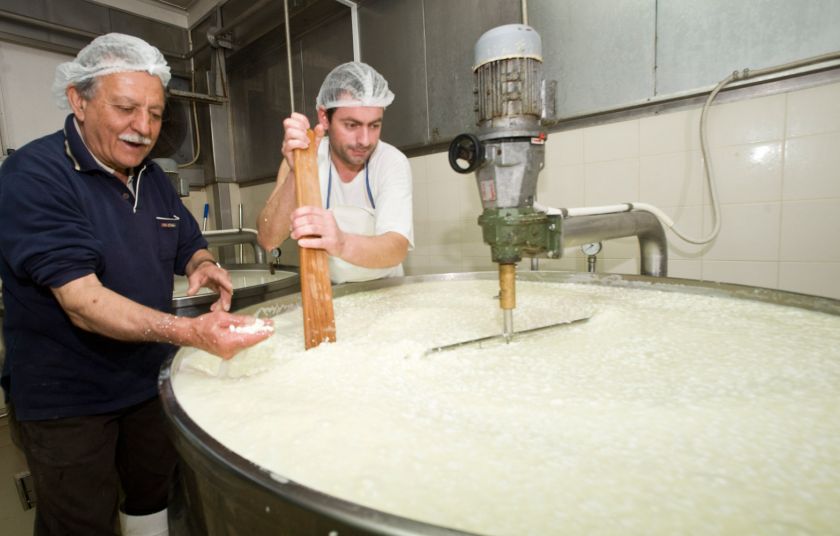Crete, the largest of the Greek islands, is celebrated for its breathtaking landscapes, ancient history, and rich cultural traditions. Among its many cherished customs, the traditions of shepherding and cheese-making stand out as vital aspects of Cretan heritage. These practices, deeply rooted in the island’s rural life, have been passed down through generations, preserving a way of life that remains integral to Crete’s identity. Exploring Cretan shepherding and cheese-making traditions offers a fascinating glimpse into the island’s agricultural prowess and culinary excellence.
The Tradition of Shepherding
Shepherding in Crete is not merely a profession but a way of life that dates back thousands of years. The island’s rugged terrain, with its mountains and rolling hills, provides the ideal environment for raising sheep and goats, the primary livestock for Cretan shepherds.
The Life of a Shepherd
The life of a Cretan shepherd is one of hard work and close communion with nature. Shepherds spend long hours tending to their flocks, ensuring they are well-fed and protected from predators.
- Transhumance: This traditional practice involves moving livestock between summer and winter pastures. In the summer, shepherds lead their flocks to higher altitudes where the grazing is plentiful, while in winter, they return to the lowlands. This seasonal migration is vital for the health of the flocks and the sustainability of the pastures.
- Daily Routine: A shepherd’s day begins at dawn and involves tasks such as milking, feeding, and herding the animals. The bond between shepherds and their flocks is strong, built on trust and understanding. Many shepherds use traditional methods and tools, such as the “katsouna” (shepherd’s staff), to manage their herds.
Cheese-Making: An Art and a Science
Cheese-making in Crete is an ancient craft that complements the island’s shepherding tradition. The cheeses produced here are renowned for their quality and distinctive flavors, which are influenced by the local environment and traditional techniques.
The Process of Cheese-Making
The process of making cheese in Crete is a meticulous and time-honored practice that combines both art and science.
- Milking: The journey begins with milking, which is typically done by hand. The fresh milk is then strained and often used immediately for cheese production.
- Curdling: The milk is heated and mixed with rennet, a natural enzyme that causes it to curdle. The curds are then cut and stirred to release the whey, which is drained off.
- Molding and Pressing: The curds are placed into molds and pressed to remove any remaining whey. The cheese is then salted and left to mature in special aging rooms or caves, where the temperature and humidity are carefully controlled.
Traditional Cretan Cheeses
Crete boasts a variety of traditional cheeses, each with its own unique characteristics and flavors.
- Graviera: One of the most famous Cretan cheeses, graviera is a hard cheese made from sheep’s milk or a mixture of sheep and goat milk. It has a rich, nutty flavor and is often enjoyed with honey or grated over pasta.
- Mizithra: This fresh cheese is made from the whey of sheep or goat milk and has a creamy, slightly tangy flavor. It is often used in pastries and as a topping for salads and pasta.
- Anthotyro: Another fresh cheese, anthotyro is soft and mild, made from sheep or goat milk. It is commonly eaten with bread or used in sweet dishes.
Cultural and Economic Importance
Shepherding and cheese-making are not only cultural traditions but also crucial to Crete’s economy and social fabric.
- Economic Impact: These practices provide livelihoods for many rural families and contribute significantly to the island’s agricultural economy. The cheeses of Crete are not only consumed locally but are also exported, enhancing the island’s culinary reputation.
- Cultural Significance: Shepherding and cheese-making are celebrated in local festivals and traditions. Events such as the “Shepherd’s Feast” and the “Cheese Festival” highlight these practices, bringing communities together and showcasing Cretan culture to visitors.
Preservation and Challenges
While these traditions remain strong, they face challenges in the modern world.
- Modernization: The encroachment of modern farming techniques and economic pressures can threaten traditional methods. However, many Cretan shepherds and cheese-makers are dedicated to preserving their heritage by adhering to time-honored practices and promoting sustainable agriculture.
- Conservation Efforts: Organizations and cooperatives work to support local farmers and shepherds, ensuring that these ancient traditions continue to thrive. Educational programs and tourism initiatives also help to raise awareness and appreciation for Cretan shepherding and cheese-making.
Conclusion
Cretan shepherding and cheese-making traditions are a testament to the island’s rich agricultural heritage and culinary excellence. These practices, rooted in a deep respect for nature and time-honored methods, continue to shape the lives of many Cretans and delight those who experience their products. As these traditions face the challenges of modernization, the commitment to preserving and celebrating them ensures that they remain a vibrant part of Crete’s identity for generations to come. Exploring these traditions offers a unique and enriching perspective on the island’s culture, history, and the enduring bond between its people and the land.


